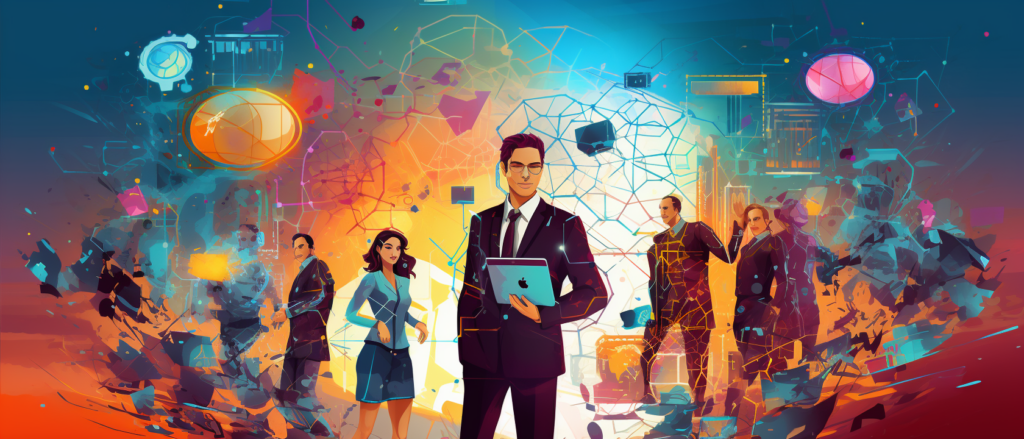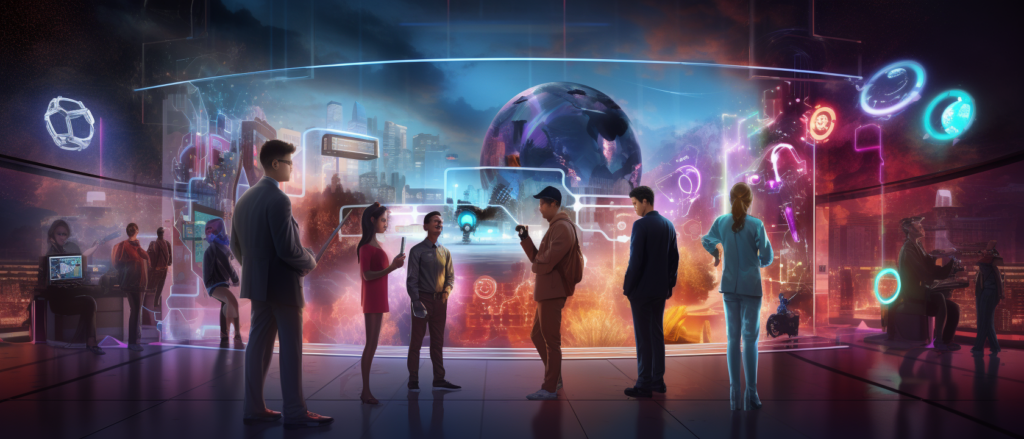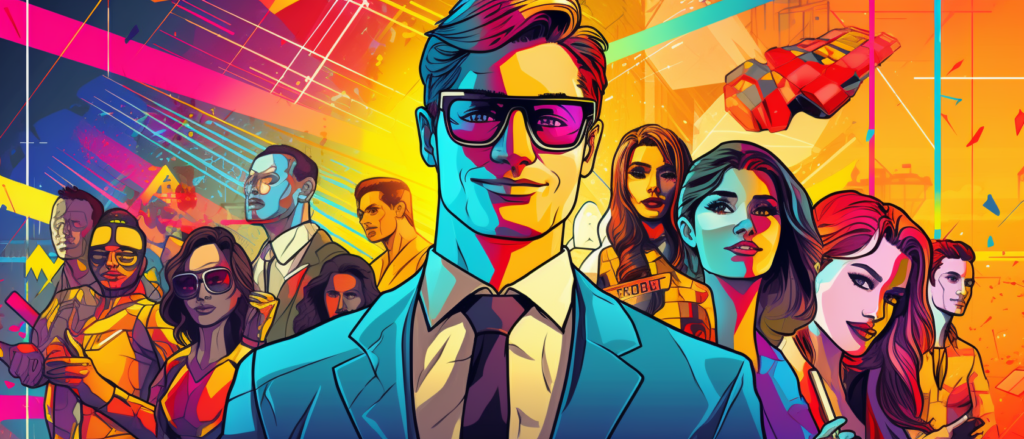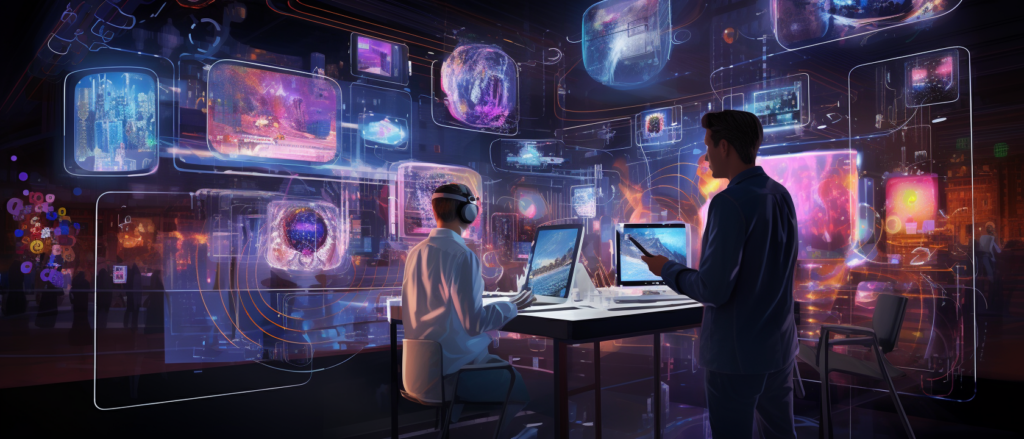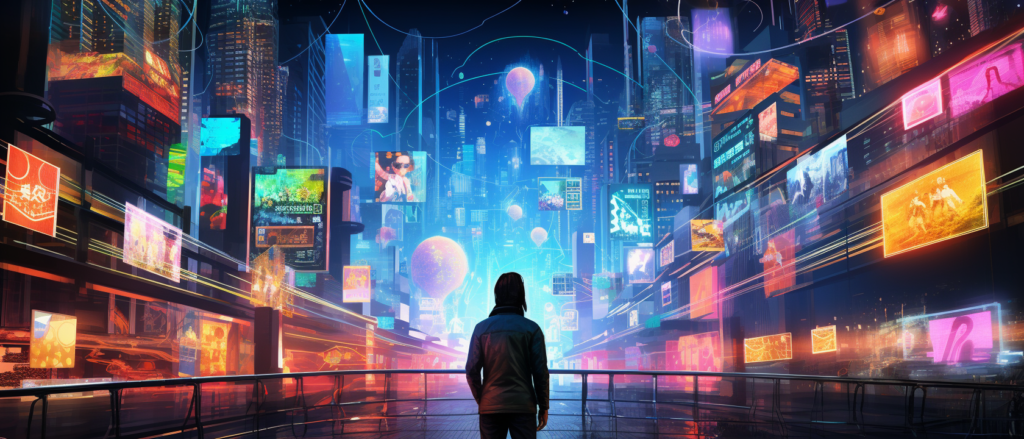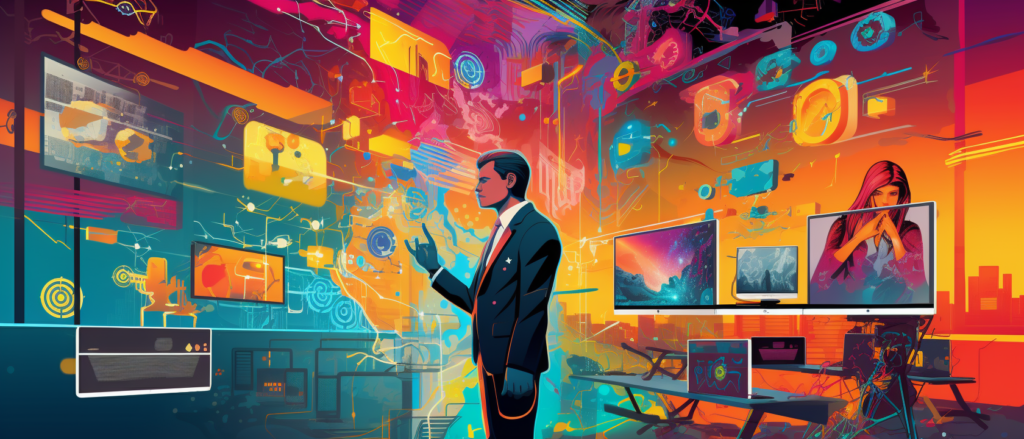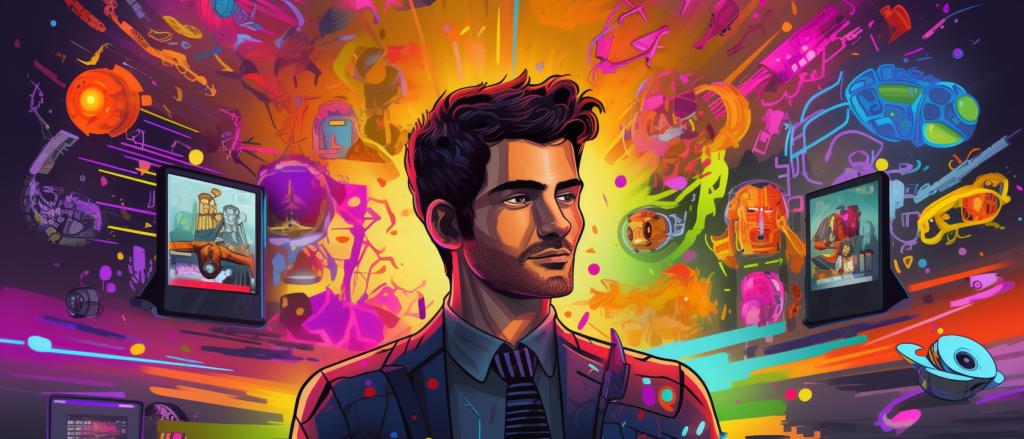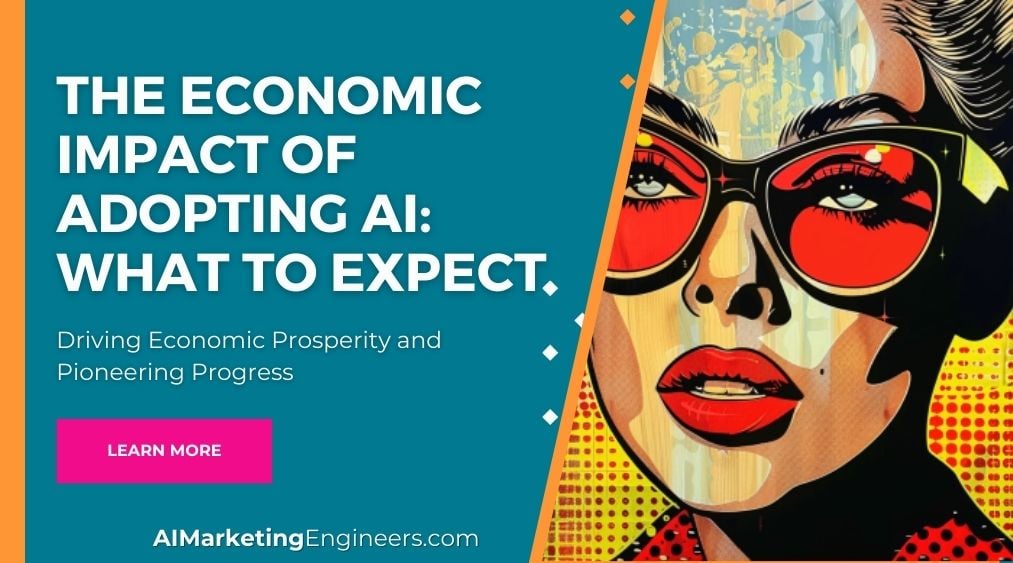Key Takeaways
✅ Personalization and Customization: Imagine crafting user experiences so unique, they feel like they've been designed for one person alone. Generative AI gives you that power. Companies using this smart tech have seen customer engagement soar.
✅ Content Creation and Automation: Hate the grind of creating content? Generative AI is like having a creative sidekick who never sleeps, generating everything from catchy slogans to compelling articles, multiplying your output with ease.
✅ Enhanced Product Development and Innovation: Stuck in development hell? Break free with Generative AI, accelerating the journey from concept to launch, minimizing costs, and injecting a hefty dose of innovation into your products.
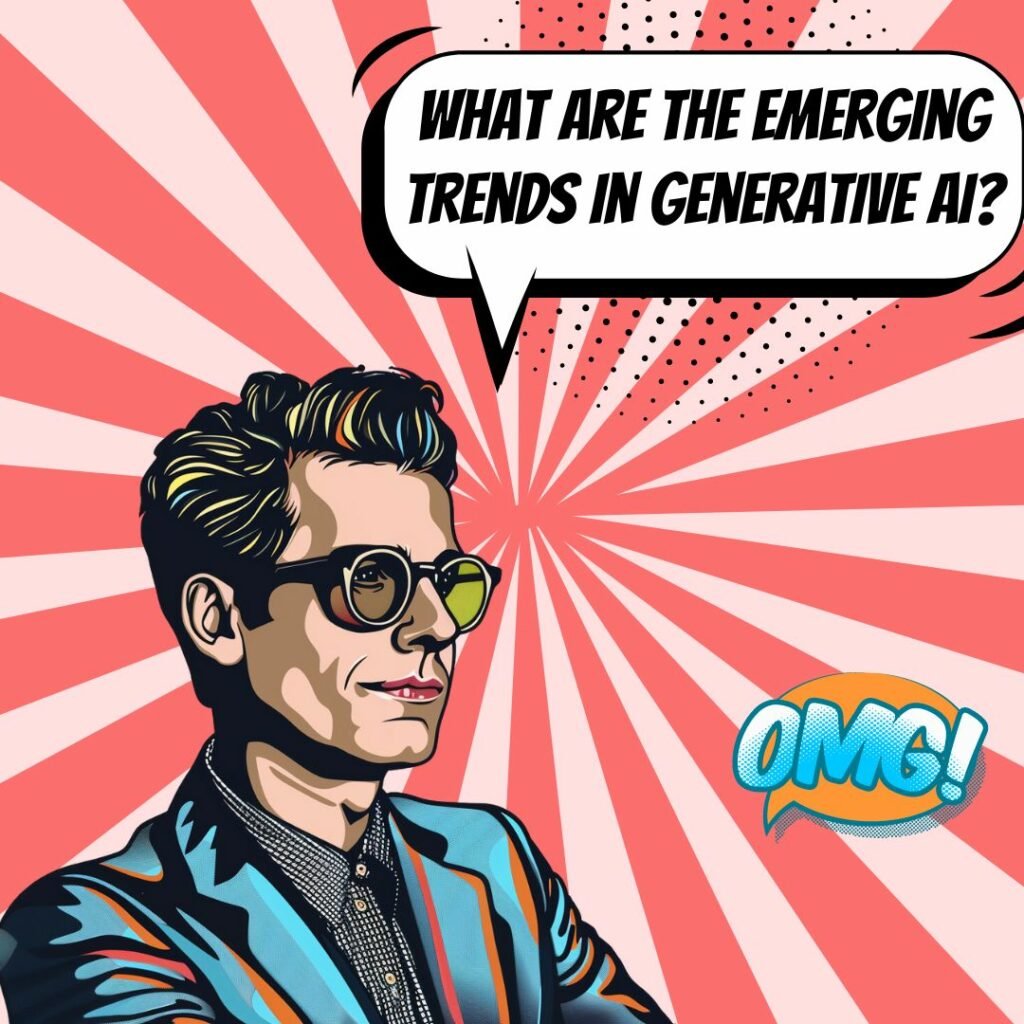
Introduction
Ever wondered what it's like to ride the wave of the future, right here, right now? Generative AI isn't just a buzzword; it's the rocket fuel powering today's business juggernauts. From the first spark of machine creativity to the latest algorithms that whisper sweet insights into a marketer's ear, Generative AI is the game-changer we've all been waiting for.
In this journey through the electric landscape of Generative AI, we’ll uncover cutting-edge advancements like the savvy neural networks weaving tales out of thin air and algorithms that craft visuals so spellbinding, you'll forget they’re not human-made. We're not just peeking into the future of business and tech; we're running towards it with eyes wide and arms open.
By the time you reach the end of this article, you'll be brimming with actionable strategies, bolstered by a newfound grasp of Generative AI's might. Ready to unlock doorways to efficiency, creativity, and personalization that you didn't even know existed? Let’s embark on this adventure together.
Top Statistics
| Statistic | Insight |
|---|---|
| Global Generative AI Market Size: Valued at $466.4 million in 2020, with a CAGR of 34.9% from 2021 to 2028. (Source: Grand View Research) | This robust growth indicates an explosion of interest and investment in generative AI, setting the stage for major transformations across industries. |
| Generative AI in North America: Expected to hold the largest market share. (Source: Grand View Research) | Being home to innovative tech hubs, North America's lead spotlights where the current hotbed of generative AI activity and opportunity lies. |
| Enterprises Embarking on AI: 65% are using or planning to use generative AI in the upcoming year. (Source: Forrester) | A large chunk of enterprises are boarding the AI train, which signifies a shift towards more innovative and automated business solutions. |
| Healthcare Industry Growth: Expected CAGR of 38.1% from 2021 to 2028 in the generative AI space. (Source: Grand View Research) | With such a high growth rate, we're likely to see groundbreaking applications in healthcare, potentially revolutionizing patient care and medical research. |
| Generative AI in Creative Industries: Set to enable the creation of personalized content. (Source: Forrester) | Imagine ads that speak directly to you or films that adapt to your preferences—generative AI is poised to make personalized experiences the new norm in creative sectors. |
Understanding Generative AI
Generative AI functions a bit like a magician, it conjures up something new from the digital hat. This type of AI learns from existing data – could be text, images, or sounds – then tries its hand at creating fresh, original content that could pass as human-made. Ever heard of DeepFakes or those virtual influencers that are all over social media? Yep, they're crafted by generative AI. It's not all entertainment though; it’s been around for a while in various forms, popping up in recent years as the tech gets smarter.
The Rise of Creative Machines
We're seeing a genuine renaissance in AI that's getting better at playing the creation game. Algorithms are now in a non-stop learning loop, absorbing the ins and outs of human creativity. Two stars of the moment? Deep learning and Generative Adversarial Networks (GANs). Deep learning is teaching computers to think deep thoughts, pitting layers of neural networks against each other. GANs are wicked-smart systems where two neural networks spar, one creating, the other judging, leading to stunningly realistic creations. And let's not forget about Natural Language Generation and computer vision – technologies shaping the narrative and visual storytelling in ways that were once fanciful.
Generative AI at Work
Imagine walking into a store where everything, from the ads to the products, feels like it was made just for you. That's what generative AI is bringing to the table for personalized marketing. On the design front, it's like having an all-star team of designers who don't sleep, eat, or take coffee breaks. This tech is streamlining content creation, too, churning out anything from articles to music, and getting better at spotting fakes and frauds in the digital world. In the medical field, it's not just about saving lives quicker, but also designing drugs in a flash that once took years.
Walking the Tightrope of Innovation and Ethics
Sure, generative AI is cool, but it's not without its headaches. Think about the ethical dilemmas – the tech could be used for dark arts like crafting fake news. Then there's the whole data privacy circus and making sure the AI isn't just making up nonsense, but factually correct and unbiased content. It's a real challenge to keep it on the straight and narrow, ensuring it's a force for good rather than a tool for misinformation or harm.
Peering into the Crystal Ball of Generative AI
So, what does tomorrow hold for generative AI? The trajectory suggests it's heading skyward, and fast. New startups are popping up like daisies, with investors opening their wallets wide. One could argue we're on the cusp of some serious cross-industry synergy, and with governments peering over the fence, policy wrangling is likely to play a part in shaping how the technology evolves.
With generative AI, we're not just talking about change; we're talking about a revolution in creation across all sectors. It beckons the savvy business leader to keep one eye on the present and the other scouting the horizon. Navigating this shifting landscape may well become the hallmark of tomorrow’s market winners. So, what's your move going to be? Will you harness the power of generative AI to reinvent your business, or watch from the sidelines as the future unfolds?
AI Marketing Engineers Recommendation
Recommendation 1: Harness Generative AI for Personalized Content Creation: Businesses should integrate Generative AI into their content creation process, focusing on crafting personalized experiences for their customers. By feeding these systems with customer data and brand attributes, AI can generate content that speaks directly to the individual preferences and behaviors of your audience. This is backed by the trend of consumers gravitating towards brands that offer personalized experiences. Start small, by using AI to create personalized email campaigns or product descriptions, and then scale as you see favorable outcomes.
Recommendation 2: Utilize Generative AI to Streamline Customer Service and Enhance Interaction: In today’s fast-paced digital landscape, instant and effective customer service is crucial. Implement Generative AI in your customer service operations to provide quick and accurate responses to consumer inquiries. Chatbots and virtual assistants powered by this AI can converse in a human-like manner and continuously learn from interactions to improve over time. This strategy aligns with the trend of increased expectations for 24/7 customer support services and the need to create more engaging, human-like customer interactions.
Recommendation 3: Leverage Generative AI for Predictive Analysis and Strategic Decision Making: Generative AI can do more than just create content; it can predict trends and customer behavior. Employ AI tools that analyze large datasets to forecast market trends, customer preferences, and potential business risks. Applying this technology for predictive analysis will guide your strategic decision-making process with data-driven insights. Businesses that capitalize on these insights can gain a competitive edge by proactively adapting to market changes and consumer needs, ultimately leading to more informed and strategic business moves.
Relevant Links
Transform Your Content Strategy with AI Magic! Unveil the Power of ChatGPT in Your Marketing Arsenal
- ChatGPT Marketing: A Modern Marketer's Tool for Creative Content
Unlocking Creativity at Scale: How Generative AI is Revolutionizing Design and Content Creation
- Understanding Generative AI: Meaning and Application
Elevating the Digital Experience: Personalization Through AI-Driven Marketing
- How AI Can Be Used In Marketing
Navigating the Ethical Labyrinth: Ensuring AI Advances Without Compromising Values
- Addressing Ethical Considerations and Challenges in the Use of AI iN Marketing
Investing in the Future: How AI Startups are Attracting Capital and Changing Industries
- What Is AI In Marketing In 2024?
Conclusion
As we wrap up our journey through the landscape of Generative AI, what stands out the most? We've seen how this cutting-edge tool is not just about intelligent machines creating art or writing stories. It's about unlocking a future where businesses can connect with customers on a whole new level, create products that are almost too good to believe, and find solutions to problems we haven't even dreamed up yet.
Think about it - a world where your favorite brands know exactly what you're looking for before you do, and they engage you with content that feels like it was made just for you. Imagine products getting better and better, with designs refined by an AI that understands the pulse of market trends. Or how about endless streams of content, tailored and curated without humans having to burn the midnight oil?
But hold on, it's not all sunshine and rainbows. We've discussed the murky waters of ethics, privacy, and the need to keep these intelligent machines in check. We need to tackle those challenges head-on, because, let's face it, no one wants a future where the tech we created turns around and bites us. Businesses gearing up for tomorrow's success can’t ignore Generative AI. It's practically an open ticket to innovation and staying ahead of the curve. Whether you're a tech guru or a curious entrepreneur, keeping an eye on these trends and the conversation around AI is like having a crystal ball – it could show you the future of your industry.
So, are you ready to jump on the Generative AI bandwagon? Imagine the possibilities, the breakthroughs, the competitive edge – can your business afford to miss out? And introspect for a moment - as exciting as this all sounds, are we prepared to face the ethical conundrums and keep our human touch in the age of machines? That’s the balance we’ll need to strike to ensure the future of AI enriches us all.
FAQs
Question 1:. What is Generative AI?
Answer: Generative AI is a subset of artificial intelligence that focuses on creating new content, such as images, text, music, or videos, using deep learning algorithms and neural networks.
Question 2: What are the key future trends in Generative AI?
Answer: Some key trends include advancements in natural language processing (NLP) and natural language generation (NLG), development of more realistic and diverse synthetic media, increased use of generative AI in creative industries, enhanced personalization and customization in products and services, and improved generative AI for scientific discovery and research.
Question 3: How can Generative AI be applied in business?
Answer: Generative AI can be applied in various business applications such as content creation for marketing and advertising, customer service chatbots and virtual assistants, personalized product recommendations and design, fraud detection and prevention, and streamlining creative processes in industries like media, gaming, and fashion.
Question 4: What are the challenges associated with Generative AI?
Answer: Some challenges include ensuring the quality and accuracy of generated content, addressing ethical concerns such as misinformation and deepfakes, managing the potential for job displacement and workforce retraining, and balancing creativity and originality with the need for efficiency and scalability.
Question 5: What are some practical applications of Generative AI in business today?
Answer: Some practical applications include generating personalized product descriptions and marketing copy, creating realistic synthetic media for training and simulation, developing customized chatbots for customer service and support, and automating the design process for products and services.
Question 6: What skills are needed to work with Generative AI in business?
Answer: To work with Generative AI in business, you'll need skills such as data science and machine learning, programming and software development, creative thinking and problem-solving, communication and collaboration, and an understanding of business strategy and operations.
Question 7: What are some best practices for implementing Generative AI in business?
Answer: Best practices include developing a clear understanding of business goals and objectives, ensuring data quality and privacy, investing in talent and training, collaborating with stakeholders and partners, and monitoring and evaluating performance and outcomes.
Question 8: What are some key hashtags to follow for updates on Generative AI and business applications?
Answer: Some relevant hashtags include #GenerativeAI, #AIinBusiness, #NaturalLanguageGeneration, #SyntheticMedia, and #AItrends.
Question 9: Can you provide some academic references for further reading on Generative AI and business applications?
Answer: For further reading, check out "Generative Adversarial Networks: An Overview" by Goodfellow et al. (2014), "The Business of Artificial Intelligence" by Harvard Business Review (2018), and "Generative Adversarial Networks: Recent Advances and New Frontiers" by Perplexity (2020).
Question 10: What are the key takeaways about future trends in Generative AI and their business applications?
Answer: Key takeaways include that Generative AI is a rapidly evolving field with many potential business applications, advancements in NLP, NLG, and synthetic media will drive future trends, businesses must balance creativity with efficiency and scalability, and that ongoing education and monitoring are essential for successful implementation.
Academic References
- Goodfellow, I., Pouget-Abadie, J., Mirza, M., Xu, B., Warde-Farley, D., Ozair, S., … & Bengio, Y. (2017). Generative Adversarial Networks: An Overview. In Advances in Neural Information Processing Systems. This foundational paper introduces Generative Adversarial Networks (GANs), discussing their structure and the massive potential they hold in creating realistic synthetic data across different mediums, which has broad implications for various business sectors.
- Perplexity. (2020). Generative AI: Scaling Creative Intellige This white paper takes a deep dive into generative AI's capabilities for business applications with a focus on how it can spur creativity, improve productivity, and drive innovation, bringing forth cost savings and better team collaborations.
- Yi, Z., Dong, X., & Zhang, Y. (2019). Generative Adversarial Networks: A Survey. IEEE Transactions on Neural Networks and Learning Systems. This comprehensive survey details the evolution and expansion of GANs, their growing role in producing synthetic data for training machine learning models—a boon for companies with limited or sensitive datasets.
- Wang, J., Zhang, L., & Li, Y. (2020). Generative Adversarial Networks in Business Applications: A Review. Journal of Business Research. This review enumerates the wide-ranging uses of GANs within various business realms, highlighting how synthetic data creation can enhance fraud detection, personalization, and analysis in fields such as finance, marketing, and healthcare.
- Accenture. (2019). Generative AI: The Creative Machine. Accenture Report. Accenture's report paints a picture of how generative AI can transform creative industries by augmenting human creativity, enabling the rapid generation of new content, and offering a competitive edge through innovation.

